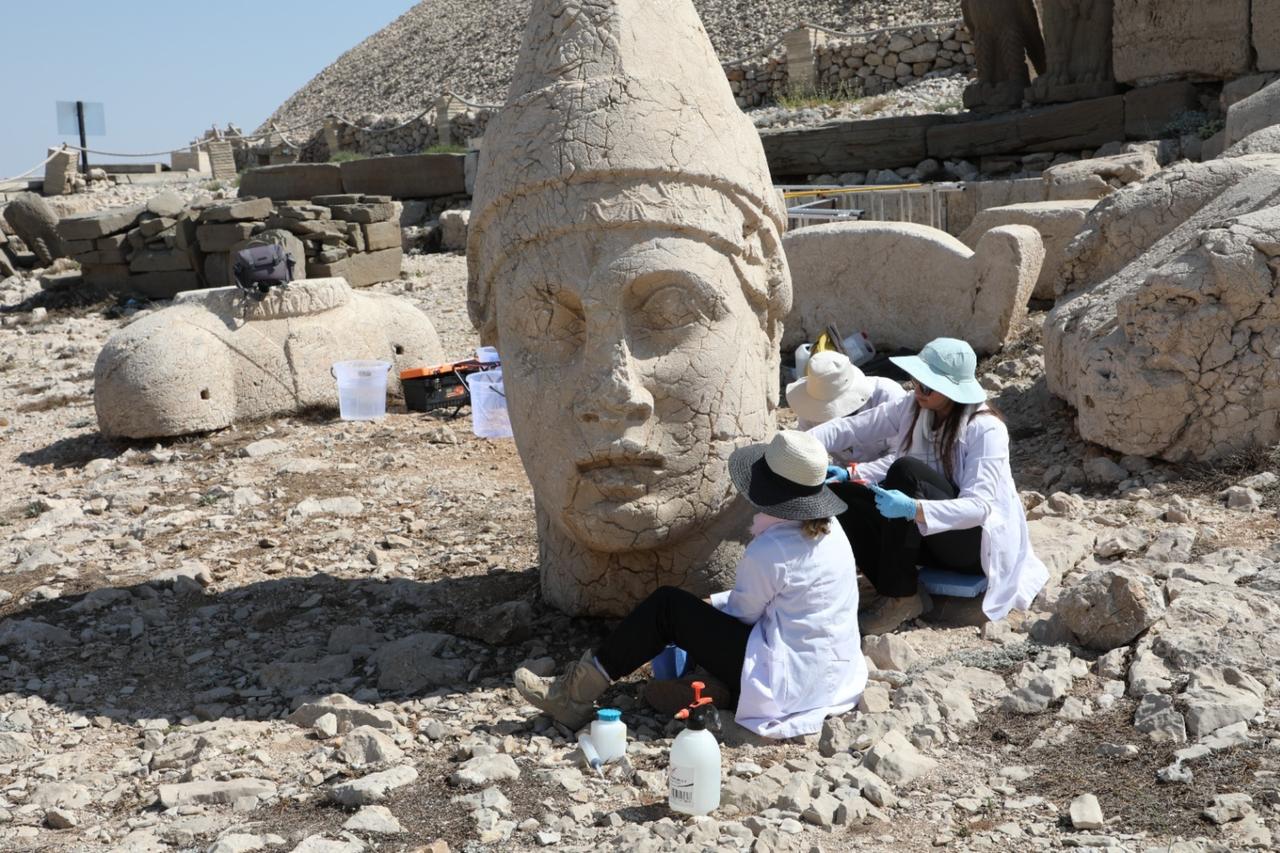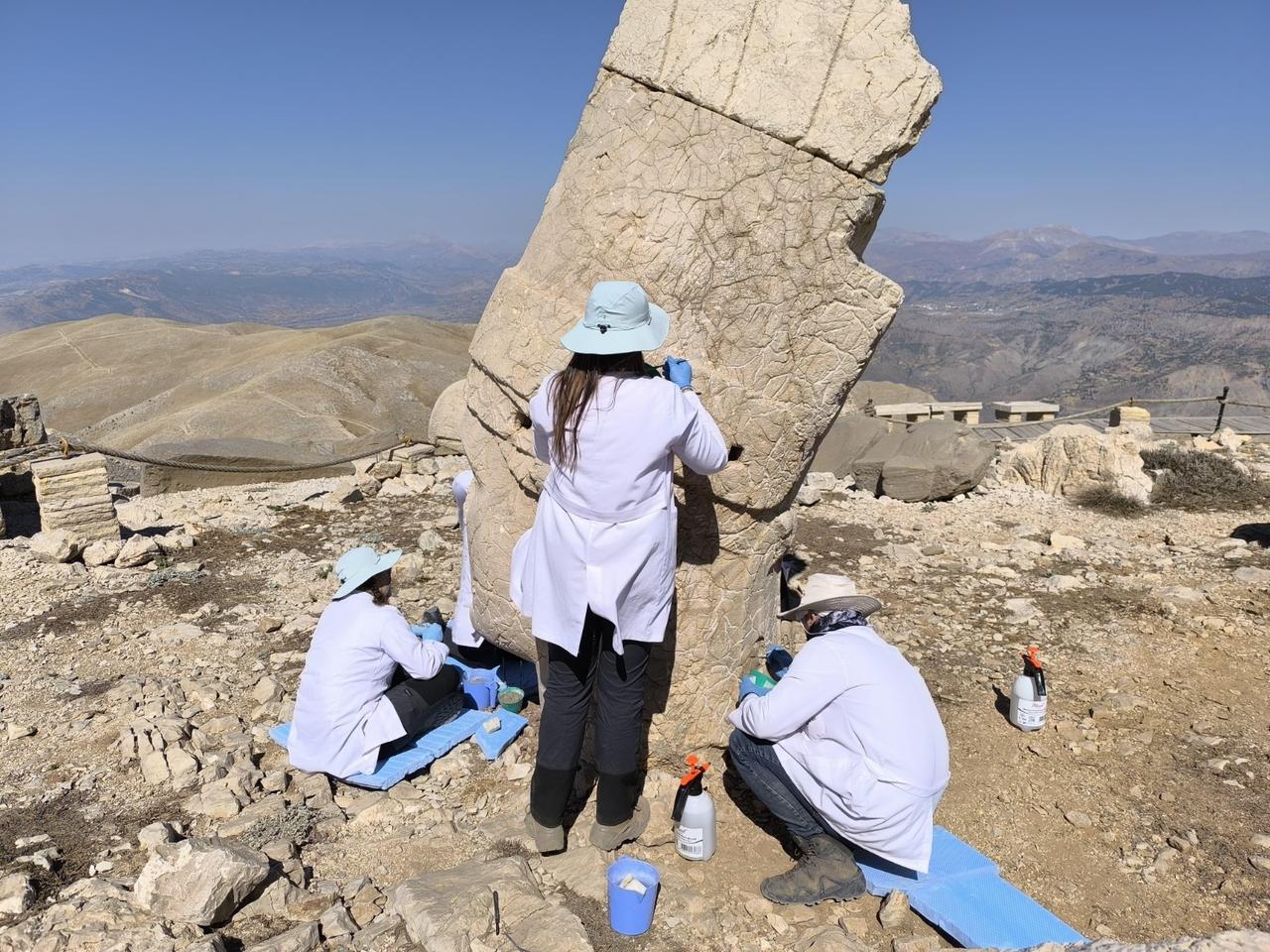
Authorities in Türkiye have begun a large-scale preservation project for the colossal statues on Mount Nemrut using nanotechnology.
The effort aims to protect the two-thousand-year-old stone heads from further erosion caused by wind, snow, and sun.

The Ministry of Culture and Tourism announced that the first stage of the project was completed between July 7 and 27.
A team of one expert from Adiyaman Museum and six restorers worked on the eastern and western terraces of the mountain. They focused on the heads of King Antiochos and the eagle, two sandstone reliefs, and the head of Apollo.
Culture and Tourism Minister Mehmet Nuri Ersoy said the work marks a turning point in the protection of Nemrut. “Nemrut’s thousands of years of heritage is being carried into the future with the most advanced techniques of our age,” he wrote on his social media account.
“With the first consolidation works, the heads of Antiochos, the eagle, and the statue of Apollo have regained their integrity. Thanks to the interventions made with nanotechnology on the east and west terraces, the texture of the stones was strengthened and cracks were closed.”

The team used different nanomaterials depending on the stone.
Limestone monuments were cleaned mechanically and biologically, then reinforced with a nano-particle calcium hydroxide solution. Cracks were filled with a hydraulic lime-based mortar. Sandstone works were treated with nano-dispersed ethyl silicate to block water from seeping into the stone.
One of the most symbolic results was on the Apollo statue. Its headpiece, which had been reattached and separated several times in the past, was permanently fixed during this round of work.
Minister Ersoy emphasized that this was the first time such methods were permanently applied at Nemrut. “Nano lime and nano silicate techniques have breathed new life into Nemrut’s stones for the first time,” he said.
Five year conservation roadmap aims to secure Nemrut’s future
The project is planned to continue over five years. Test studies began in 2022 and monitoring continued through 2023 and 2024 before this summer’s application phase. When completed, the ministry said the program will ensure the monuments remain standing for future generations.
According to the ministry, the long-term roadmap will provide the statues with durable protection and allow Nemrut’s heritage to be preserved as part of world history.